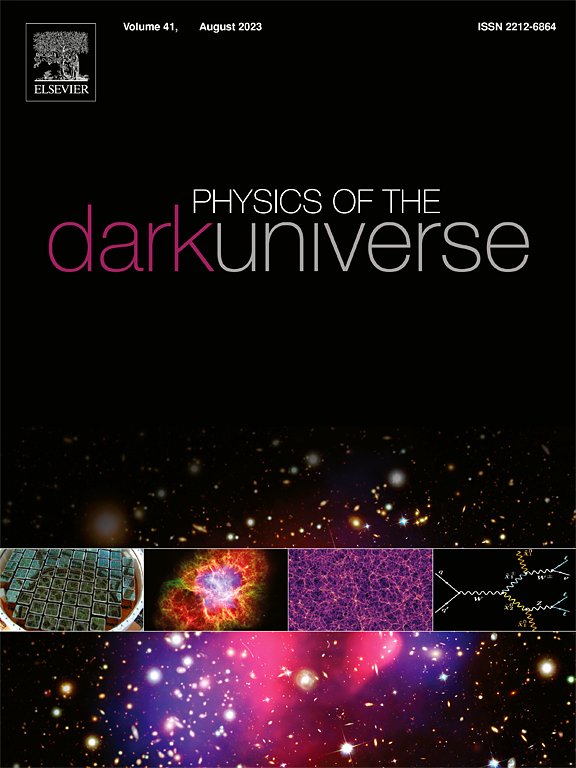Plasma lensing, epicyclic oscillations, particle collision, and thermal fluctuations around a short-hairy black hole
IF 5
2区 物理与天体物理
Q1 ASTRONOMY & ASTROPHYSICS
引用次数: 0
Abstract
We explore the behavior of test particles in the vicinity of a spherically symmetric black hole with short-hair characteristics, emphasizing the impact of the model’s parameters on various phenomena such as particle trajectories, plasma-induced gravitational lensing, epicyclic oscillations, and thermal variations. The black hole is defined by three key parameters: mass , the short-hairy parameter , and an additional parameter . We derive analytical formulas for the energy and angular momentum of test particles, expressed in terms of these black hole parameters. Additionally, we investigate the effective potential, the innermost stable circular orbits, and the forces influencing particle motion. The study also delves into the epicyclic oscillations of particles close to the equatorial plane, providing analytical expressions for radial, vertical, and orbital frequencies, along with the periastron precession frequency. In the context of weak gravitational lensing with plasma, we observe that the parameter does not affect the deflection angle, whereas the other parameters play a significant role. Moreover, we analyze thermal fluctuations in these short-hairy black holes, which are linked to the Hawking temperature and entropy. Our findings underscore the profound influence of the black hole’s parameters on particle dynamics, revealing fascinating aspects of their behavior.
求助全文
约1分钟内获得全文
求助全文
来源期刊

Physics of the Dark Universe
ASTRONOMY & ASTROPHYSICS-
CiteScore
9.60
自引率
7.30%
发文量
118
审稿时长
61 days
期刊介绍:
Physics of the Dark Universe is an innovative online-only journal that offers rapid publication of peer-reviewed, original research articles considered of high scientific impact.
The journal is focused on the understanding of Dark Matter, Dark Energy, Early Universe, gravitational waves and neutrinos, covering all theoretical, experimental and phenomenological aspects.
 求助内容:
求助内容: 应助结果提醒方式:
应助结果提醒方式:


